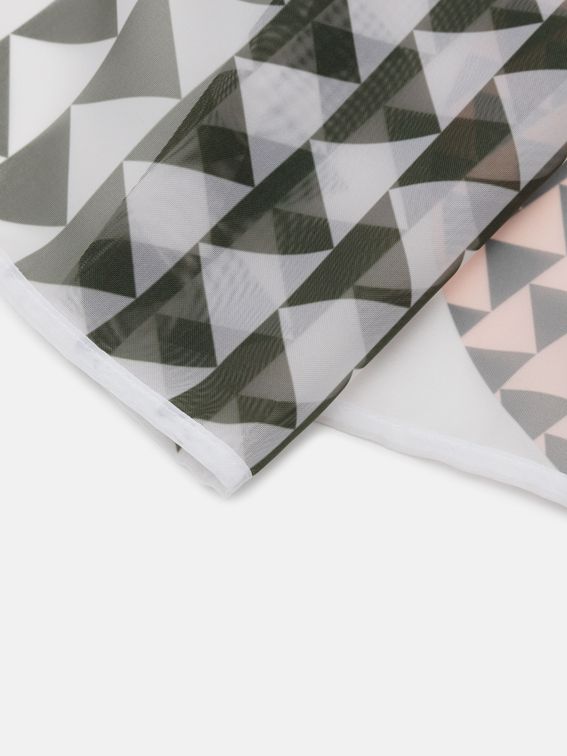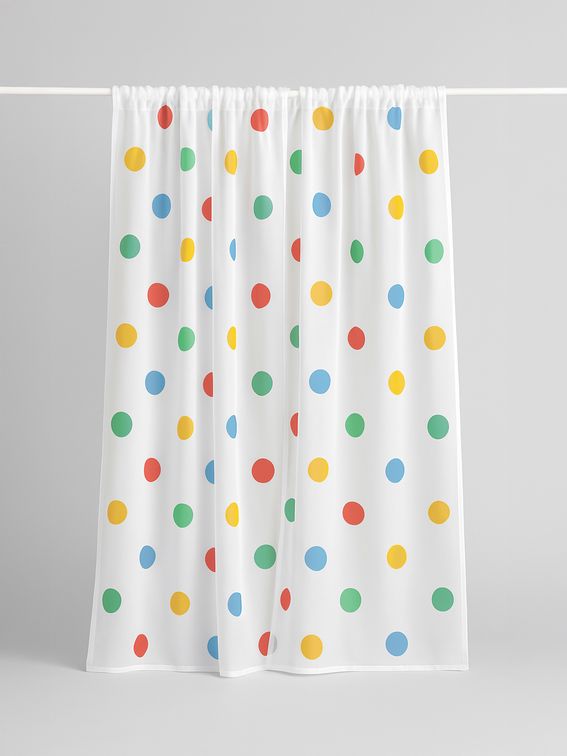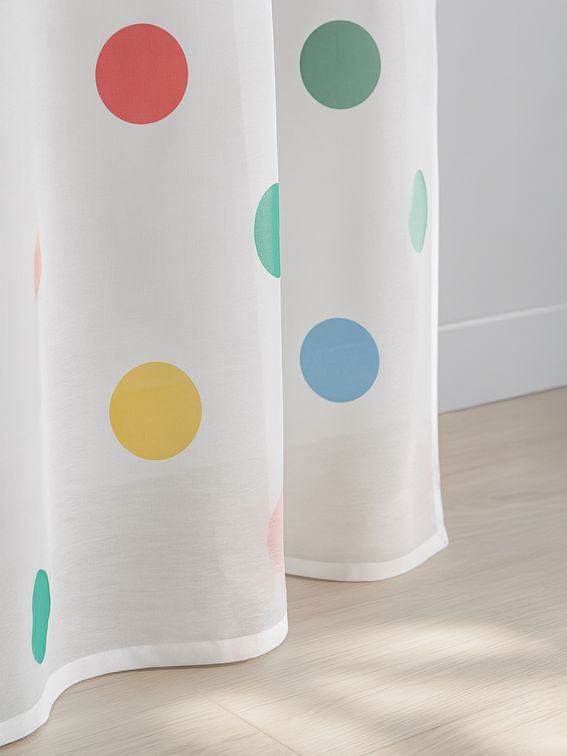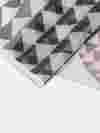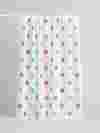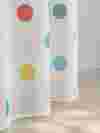from $110.00
Was $129.00
-
Wholesale discounts, no minimum order
-
Available in single panels or pairs
-
Tape heading for easy installment
-
Amazing wholesale discounts apply
-
No minimum order requirements
-
Sustainably printed
-
Quick worldwide delivery
Explore our
Product Description
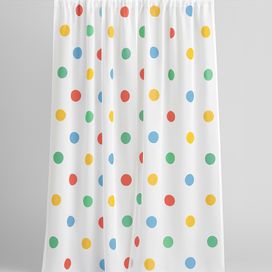
Handmade net curtains with a sheer quality are effortlessly stylish. The fabric is smooth and crisp to touch, and it's a contemporary option compared to more traditional style net curtains. Design your own custom made voile curtains and add another dimension to your room. Wholesale discounts are available with no minimum order.
Care instructions
Wash at 30°C / 86°F, low tumble dry heat, hang to dry, do not wring, low heat iron.
How it works
Upload your design
We automatically apply your design to the product you selected
Make it perfect
Use our smart tools to get it exactly right and select the finishing options
Preview & checkout
Confirm your designs with our 3D previews and checkout with confidence
1-2 Days Production
Sit back and relax. Your product is on its way!
How our pricing works
Our competitive prices reflect the handmade, made-to-order craftsmanship of our products. We offer custom quotes and special discounts for students and wholesalers. Contact us to learn more!
We offer discounts
We offer discounts on all our products, including bulk, quantity and student discounts. Enjoy great deals whether you're a small business, designer, or student.
| Volume discount | Wholesale | Students |
|---|---|---|
| Get a custom discount | Up to 44% | Up to 20% |
|
Request quote
Discount available. Price by selecting dimensions & quantity. |
Find out more | Find out more |
Delivery time & costs
Custom Net Curtains
from $110.00
Was $129.00
-
Wholesale discounts, no minimum order
-
Available in single panels or pairs
-
Tape heading for easy installment
-
Amazing wholesale discounts apply
-
No minimum order requirements
-
Sustainably printed
-
Quick worldwide delivery
Explore our
Help
About Your Net Curtains
These sheer voile curtains custom made with your designs have a natural ethereal quality, and the drape is so elegant. Made to measure using your bespoke sizes, it's the perfect way to decorate any window, no matter how big or small. Alternatively, they can be used as a contemporary room divider. Coming with 2 hanging options and an 3.15" heading tape sewn into the top, your net curtains are a delight to have in your room.
At a glance...
- Sheer voile fabric
- Wire or tape heading
- Fire retardant
- Single panel or pair
- Handmade
Voile Net Curtains Size
- Custom size, max. 1575" x 1575"
How your Custom Made Voile Curtains are Made
Your designs are printed onto the sheer voile fabric using dye sublimation. This is where the inks are fused deep into the fibers to create a vibrant, permanent print. The material is cut to meet your bespoke dimensions, and our seamstresses hem the edges and finish your made to measure net curtains by hand. Please note that if you select a pair of net curtains, we print your design onto a large panel of voile fabric and then split it in half. This is so when the curtains are pulled together, your design matches up.
For widths over 59", several panels may need to be stitched together, as the fabric comes on a roll with a maximum width. If this is the case, we'll contact you to confirm before proceeding. We always try to ensure the seam doesn't interrupt your design, but please understand that the seam might be visible.
Design Tips
Here's some pointers to design your custom made voile curtains with the best results. If you're looking for an alternative room divider, solid block color designs make your curtains transparent and are ideal for attaching to beams and helping to create a dynamic room arrangement. For more privacy, choose designs that have a lot of details and bold prints. They will still be sheer and semi-transparent, but shapes will not be as visible.
Due to the sheerness of the fabric, colors are muted but details are still crisp well defined. The front of your custom made voile curtains produces more saturated colors compared to the back.
How does this product enhance my...
Home
Elegantly draped over your conservatory windows, your made to measure net curtains provide a stunning backdrop for summer whilst letting some light through. Or, you could use your voile curtains as room dividers. Hung from doorways or beams, you can easily maximize your living space in moment and create a little privacy in the next.
Business
Net curtains made and manufactured are a quality addition to your business' decor. For salons and spas where you want to separate open plan spaces for different treatments, these made to measure net curtains are perfect. Printed with your business' logo, they're a classy touch that combines elegance with professionalism.
Design Brand
If you're a designer with your own brand, you might want to consider developing a new range of home furnishings. An essential line to include would be decorative curtains that are versatile to use around the home. Print with your unique illustrations, drawings or paintings and offer customers a novel & unusual way of enjoying your work.
Print Guideline
What's the best resolution to print in?
We print at 200dpi, which is a good combination of quality and file weight. Ideally your image should be scaled to 100% at 200dpi, this means that no resizing of your file occurs stopping any interpolation.
Should I save my file as a TIFF or JPEG?
For multi-colored or very detailed files we recommend using a tiff format, but they must be flattened. For simple colours and low detail files, a jpeg is fine.
Which color model should I choose? RGB or CMYK?
We advise providing images in the RGB color space. Specifically using the sRGB image profile, to achieve best color results. What does this mean? In your editing software, choose RGB as the working space and assign the image profile as sRGB (full name sRGB IEC61966-2.1)
What does GSM mean?
Grams per Square Meter (GSM) is an international standard for measuring the weight of paper or fabric. GSM uses the weight of a square meter (1000 x 1000mm) as an indication of the weight and thickness of a given fabric. We class 20-100gsm as light (summer fabrics, gauzes and fine silks), 101-249 gsm as medium (most clothing fabrics) and 250+ gsm as heavy (upholstery fabrics, and other specialist fabrics).
What are bleed areas?
When designing your product, it’s best to make sure that your image is slightly larger than needed. In printing, the extra printed image is referred to as a “Bleed Area” or margin, and it is removed from the finished piece. A bleed area acts as a buffer for slight inconsistencies in the manufacturing process. however, it’s important to fill your bleed areas completely, or you may end up with white, unprinted strips along the edge of your finished product.
Do you print on garments a customer supplies?
Unfortunately not. All our garments are printed on flat fabric, and sewn into finished products, which gives a better finished result and all-over print. We test meticulously so that we know what gets best results on our fabrics, and our facilities cater perfectly to them. We do however print sublimation paper to order, so if you have access to a heat press you can press your fabrics or flat garments easily.
Can you Align a Pattern or design across panels of a garment?
We always strive for the greatest accuracy when printing and constructing your garments. However, due to unavoidable stretch or movement of the fabric during the stitching process, we cannot guarantee perfect pattern registration across garment seams. We are generally accurate within 0.08" 0.12", which Is close enough for most patterns, but may show slight issues with detailed geometric patterns.
Can I print my own Labels?
Most of our garments now come with printable label space for you to add your own company information and branding! If you would like to sew in your own labels, we also offer Printed Fabric Labels here.
How is your fabric printing eco-friendly?
With environmental consciousness in mind, our fabrics are all printed using completely water based inks. This means no chemicals or solvents are used. Our heat fixing procedure fixes the colors and prints, avoiding the downsides of steaming, such as excess or contaminated water returning into the waste system. We have one facility in where we conduct all the printing, production and fulfillment.
Please note: As we make everything by hand, all sizes may vary slightly.
Are they fire rated?
Yes, the voile fabric used to make your net curtains is fire rated so it's completely safe to use in a domestic setting.
What are the hanging styles?
There's a choice of 2 hanging styles; wire hanging or use the 3.15 heading tape that's sewn into the top of your curtains.
Are they transparent?
If your design is a solid block color, the curtains are transparent, however detailed designs make your curtains semi-transparent.

